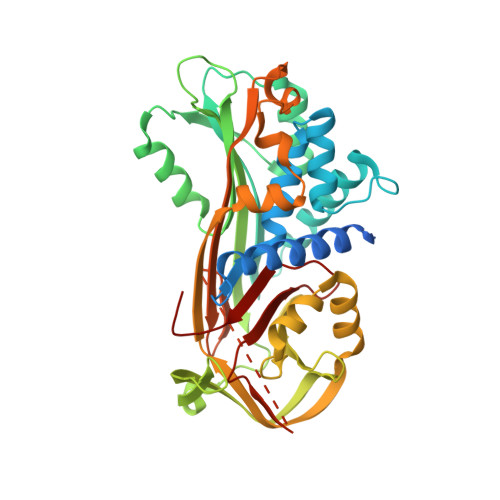Identification and characterization of a misfolded monomeric serpin formed at physiological temperature
Pearce, M.C., Powers, G.A., Feil, S.C., Hansen, G., Parker, M.W., Bottomley, S.P.(2010) J Mol Biology 403: 459-467
- PubMed: 20837024
- DOI: https://doi.org/10.1016/j.jmb.2010.09.007
- Primary Citation of Related Structures:
3DLW - PubMed Abstract:
The native serpin state is kinetically trapped. However, under mildly destabilizing conditions, the conformational landscape changes, and a number of nonnative conformations with increased stability can be readily formed. The ability to undergo structural change is due to intrinsic strain within the serpin's tertiary fold, which is utilized for proteinase inhibition but renders the protein susceptible to aberrant folding and self-association. The relationship between these various conformations is poorly understood. Antichymotrypsin (ACT) is an inhibitory serpin that readily forms a number of inactive conformations, induced via either environmental stress or interaction with proteinases. Here we have used a variety of biophysical and structural techniques to characterize the relationship between some of these conformations. Incubation of ACT at physiological temperature results in the formation of a range of conformations, including both polymer and misfolded monomer. The ability to populate these nonnative states and the native conformation reflects an energy landscape that is very sensitive to the solution conditions. X-ray crystallography reveals that the misfolded monomeric conformation is in the delta conformation. Further polymerization and seeding experiments show that the delta conformation is an end point in the misfolding pathway of ACT and not an on-pathway intermediate formed during polymerization. The observation that ACT readily forms this inactive conformation at physiological temperature and pH suggests that it may have a role in both health and disease.
- Department of Biochemistry, Monash University, Victoria 3800, Australia.
Organizational Affiliation:
















